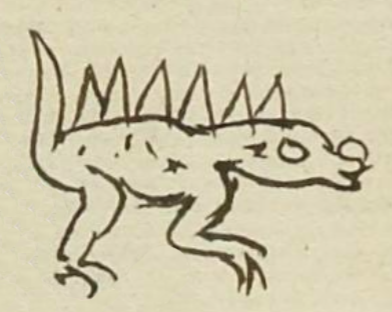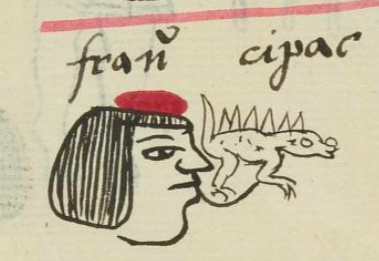Cipac (MH595r)
This black-line drawing of the simplex glyph for the personal name Cipac (“Crocodile,” attested here as a man’s name) shows a profile view of a crocodile (cipactli) or an alligator facing toward the viewer's right. The animal is up on its legs as though moving forward. Its tail is up, and its back is covered with six triangular points. Its eye is open, and its body has some spots.
Stephanie Wood
This name is a day sign. Originally, a name like this would have a number attached to it. But calendrical names were evolving at the time of this manuscript (1560), often dropping their numbers. This day sign comes from the tonalpohualli, the 260-day divinatory calendar. Calendrics figure importantly in Nahuas' religious views of the cosmos. The thirteen-day cycle that was started by One-Cipactli was an auspicious time to be born according to a downloadable publication hosted by Mexicolore.
Stephanie Wood
frano cipac
Francisco Cipac
Stephanie Wood
1560
Stephanie Wood
crocodiles, cocodrilos, caimanes, calendarios, nombres de días, calendars, fechas, nombres de hombres

cipac(tli), crocodile, caiman, alligator, https://nahuatl.wired-humanities.org/content/cipactli
Cocodrilo
Stephanie Wood
Matrícula de Huexotzinco, folio 595r, World Digital Library, https://www.loc.gov/resource/gdcwdl.wdl_15282/?sp=269&st=image.
This manuscript is hosted by the Library of Congress and the World Digital Library; used here with the Creative Commons, “Attribution-NonCommercial-ShareAlike 3.0 License” (CC-BY-NC-SAq 3.0).









